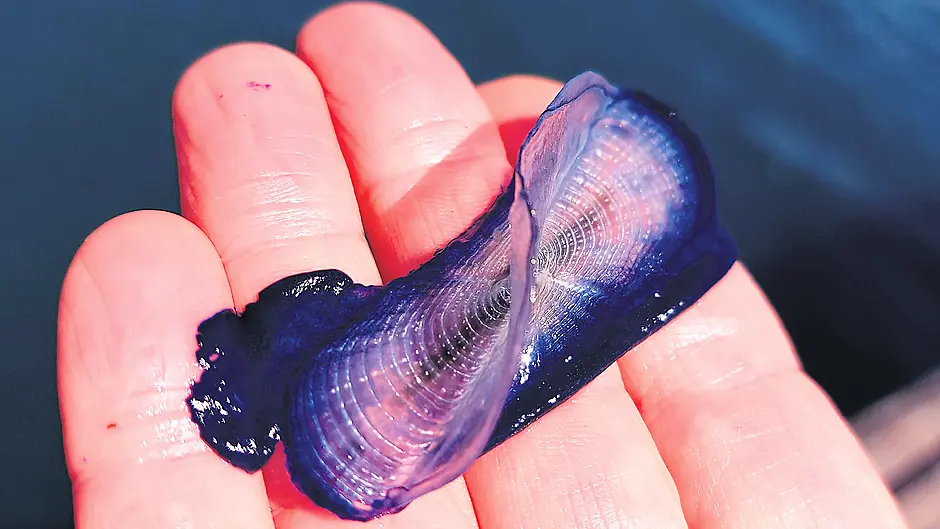IF you’re reading a column about wildlife, chances are you get a buzz out of nature as I do and also appreciate how lucky we are to notice ‘the magic word of another law’, as Kavanagh so beautifully expressed it.
In this, my final article after 15 years as a Southern Star columnist, I hope you’ll indulge me as I stray off the beaten track a little to discuss our very important connection with nature and its benefits.
Our place in nature
Our pre-historic ancestors believed that the landscape around them was alive, as many so-called primitive cultures still do today. They sought messages from another realm through nature, observing signs that they accepted as portends of good fortune or chaos to come. And they respected their natural environment, believing themselves to be part of it rather than its master as we do today.
Even up to one or two generations ago, Irish people were intimately familiar with their natural surroundings. The farmers knew each of their animals personally and knew every nook and cranny of their land, as well as the field names and the stories of all those who came before them in that landscape. And there was so much folk knowledge of old cures in nature and the beliefs and pishógs associated with various plants and animals, alongside a respect for their power.
This closeness to nature began to wane alongside developments in technology, and the separation continues unabatedly worldwide today. More and more people are living in cities, at a remove from their natural surroundings, spending most of their time indoors and losing their affinity with the ‘real world’, as I like to call it.
But most people, when asked where they feel most relaxed and happy, would describe a place in nature. And study after study tells us that spending time in a natural environment benefits both our physical and mental wellbeing.
Biophilia is the term used to describe man’s inherent need and affinity with nature. ‘Philia’ is Greek for ‘love of’ so the term literally means ‘the love of life and living things’.
A leading American biologist in the 1980s, Edward Wilson, carried this concept further when he said that there is a genetic basis to our species’ deep connection with nature. Describing it as ‘the connections that human beings subconsciously seek with the rest of life’, he suggested that our affinity with other living things actually forms part of our evolutionary development rather than just being an aesthetic pleasure.
This inherent need in humans has become an accepted scientific concept now, with various studies confirming the many benefits of our interaction with nature. And biophilic design has developed in architecture as a result, as buildings with natural light and views of living things have been proven to increase productivity and well-being in our species.
But, as someone interested in wildlife you, wise reader, already know all this. And thankfully there is a wider recognition of this now too as the Covid crisis gave people more time to become aware of the natural world.
For me, nature has always been a source of joy and has provided comfort and peace through difficult times. Choughs caw-cawing overhead, a flash of a wren’s perky tail and an intimate encounter with a bumble bee dancing its way around a dog rose have all been ‘extreme moments’ gifted to me by nature in the last few days. And this beautiful creature (in the accompanying photo) that washed into my hand as I swam in the sea this morning is the final wildlife topic I’ll share with you in this column.
Valella Valella, or the by-the-wind-sailor, is either a colony of polyps living together or a single organism, depending on which book you read as it’s been reclassified in recent years. Whatever family it belongs to, this extraordinary creature is washed up on our shores in great numbers from time to time. The tiny transparent sail atop its floating raft enables it to be carried long distances by the wind, with the nautical term giving rise to its common name. The direction of the sail’s angle varies in different parts of the world according to the prevailing winds in that location. This little blue ‘sailboat’ is a carnivore, feeding whilst afloat on zooplankton caught with its miniscule stinging tentacles that hang just below the water surface.
And that’s the final one of nature’s miracles I’ll get to share with you here. Thanks to everyone who has gotten in touch by email over the years. I really appreciate all the kind words and feedback from Cork, Kerry and beyond. And long may we all continue to enjoy the benefits of biophilia and the infinite glories of the natural world.
Terri







